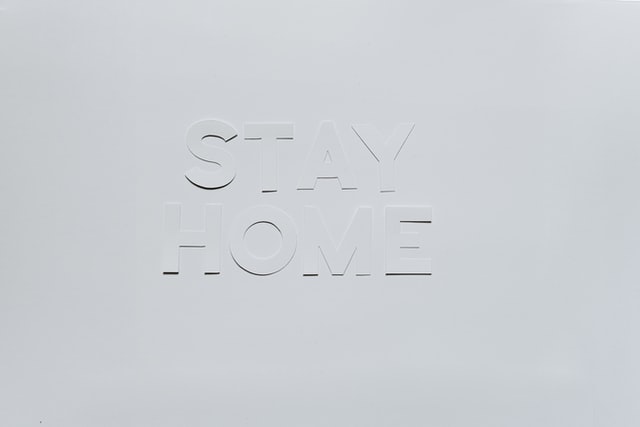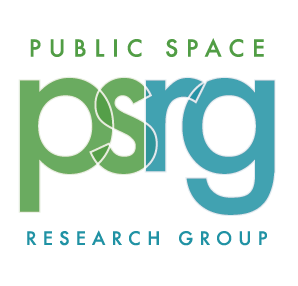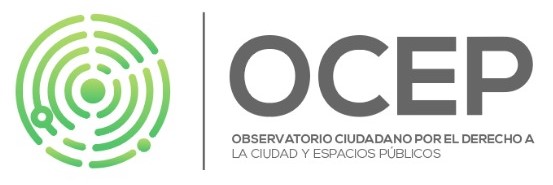Series 1 - Webinar 1
2020: A Year without Public Space under the COVID-19 Pandemic
Reframing the Role of Public Space during and after the COVID-19 Pandemic
Thursday 7 May 2020 / Series 1 (May) - Webinar 1
>>> Speakers and agenda
>>> Programme of our COVID-19 initiative
The webinar was initiated and hosted by Luisa Bravo (City Space Architecture / The Journal of Public Space, Italy) and Hendrik Tieben (The Chinese University of Hong Kong, Hong Kong) as the first event of the initiative: “2020: A Year without Public Space under the COVID19 Pandemic”.
For the first session they invited four speakers to present perspectives from different parts of the world (Seattle, New York, Guayaquil, and Cairo) following the spread of the pandemic. In addition, they invited Jose Chong from the Global Public Space Programme of UN-Habitat, the United Nations Human Settlements Programme, for a global perspective on the current issues arising from the pandemic for public space.
Credits
Recorded video of the webinar produced by Yin-Fen Chen, The Chinese University of Hong Kong
Summary of the webinar curated by Stephanie Cheung, The Chinese University of Hong Kong
Insights from speakers
Jeff Hou, Urban Commons Lab, University of Washington, USA
“Efforts like this created a form of public space when the actual physical space is no longer available or accessible, and that to me was perhaps the most powerful thing that I’ve witnessed during the current pandemic, one that I think challenged the common assumptions of how public realm and public space function.”
The community has shown its resilience during the pandemic. Storefronts have become canvas for local artists, a truly coordinated neighbourhood effort with local donations of supplies and materials. As Jeff notes, this is “one of few bright spots in terms of community resilience and the transformation of the public realm, our streets have never been so colourful and interesting.” Community-based organisations and individuals organised themselves to help those in need, especially senior citizens under the stay-at-home order and local businesses that were hit. Students, albeit without access to school facilities, created production lines to fabricate personal protection equipment for healthcare workers, 552 units fabricated and shipped to New Orleans, Brooklyn, Atlanta, and Seattle.
Setha Low, Public Space Research Group, Center for Human Environments at the Graduate Center of City University of New York, USA
“Without third places and public spaces where people come into regular contact with others outside their circle thinking can metastasize from prudent public health advice to paranoia and prejudice. Coronavirus not only challenges our physical, mental and economic health, but social justice principles and social health.”
Setha acutely pointed out how distribution of COVID cases were lower in wealthier neighborhoods like Manhattan, Park Slope, Carol Gardens in Brooklyn as compared to outer boroughs where more people of color, lower income individuals, African-Americans and Latinos live, reflecting the inequality of access to health care. Some wealthier New Yorkers who own second homes also decided to escape smaller towns’ vacation homes and suburbs, leading neighbouring states to impose roadblocks and self-quarantine measures. COVID has become an issue of social injustice and racism within New York City, an “us versus them” issue. Many have overlooked people who cannot shelter in place, such as essential workers (mostly African-Americans and Latino) who still have to go to work and use the subways, and are labelled as dangerous. Homeless slept in subways since they were scared of the density of shelters during COVID, they were ‘swept out of subway stations’. New York is opening up 7 miles of streets and aiming at 100 miles, but it is unclear whether the streets opening are evenly distributed, as bigger public spaces in the city are situated in wealthy neighbourhoods.
Luis Alfonso Saltos Espinoza, Observatorio Ciudadano por el Derecho a la Ciudad y Espacios Públicos de Guayaquil, Ecuador
“Urban planning has to adopt or change according to the necessities and coordinate what happened after COVID-19. Mobility is now an urban necessity.”
Guayaquil is the city with most confirmed cases of COVID-19 in South America, yet there is a lack of hospitals and resources. Luis Alfonso started a Twitter campaign with hashtag #FallecidosCovid19Ec to map undocumented deaths that took place at homes. Narrow sidewalks of 1-1.5 metres have become places where people put the bodies of the deceased because of the lack of space, cemeteries and people to recover the bodies, and also places to line up, this means no space to exercise proper social distance.
This pandemic has created opportunities for collectives to fight for changes municipality ought to make. In Guayaquil, the discussion in urban planners and collectives right now is to re-understand the urban scale, to adopt the concept of neighbourhood rather than city. With 45% of the population that work informally, informality and urban mobility have to be part of the designs. There is a need for a new urban design that involves city participation and public space that’s more comfortable for the people.
Mona Helmy, Department of Architecture, Faculty of Engineering, The British University in Egypt (BUE), Egypt
“The Middle East area perceives this pandemic as physical distancing but not social distancing.”
Governments in the Middle East first coped with COVID-19 via sanitization of public spaces, followed by shutdown of public spaces like waterfront, and curfews at night or even 24 hours. Shopping mall is an important typology of indoor public spaces in the Gulf region and beyond, it is a place for gathering and activities but not only shopping, and malls were also closed during the pandemic. Some could not bear this and started going out for non-emergency issues like shopping, recreations, socializing. Mona questioned the possibility of and social adaptability of distance gathering and raised several provocative questions towards the end of her presentation: Will public spaces remain with the same characteristics after the COVID-19 Pandemic? Will it be (re)designed to consider physical distancing? Will it have other innovative approaches for safe gathering? Can it be replaced with privatized public spaces? What will be the socio-spatial implications of the COVID-19 Pandemic?
Jose Chong, Global Public Space Programme, UPDB, UN-Habitat (United Nations Human Settlements Programme)
Jose pinpointed how the virus is spreading in cities, with 95% of total cases took place in urban areas. Yet, physical distancing and sanitation are impossible for certain parts of the population, those living in informal settlements (1 billion), overcrowded and inadequate housing (1.8 billion), and 2.4 billion who lack access to safe water and sanitation. We have to remember that there are three crises happening at the same time. Thus, UN-Habitat has developed three tracks of responses: health, humanitarian, and socio-economic to support governments in informal settlement, provide accurate data for decision-making, and motivate the economy.
“Public space is a threat to urban health, but has also proven to be a critical infrastructure for operation and well-being.”
Short-term interventions:
- Recognize public spaces as an important asset during crises and for livelihoods for low-income populations. Make an inventory of public spaces and facilities.
- Repurpose land allocated to streets to allow physical distancing and non-motorized mobility and activities.
- Maintain multi-functional and flexible public open spaces that can adapt to urgent demands.
- Public facilities can provided essential services required for marginalized communities
Medium and long-term interventions:
- Ensure equitable distribution of public spaces across the city and at neighbourhood scale.
- Plan for self-sufficient neighborhood, e.g. Paris’s 15-minute city concept
- Pay attention to urban design, furniture materials, management and maintenance
- Utilize open space for recovery of public life and well-being through community engagement, placemaking, and participatory processes.
Now is a paradigm shift on city building, an opportunity to collaborate to re-think how cities should be. It is a chance to reposition health at the center of urban development that promotes integrated and collaborative response from governments and communities.
Roundtable discussion
What are the key issues for public space under the pandemic and beyond?
Setha and Jeff highlighted the unequal access to public space as one of the main issues during the pandemic. With organised communities seen to be more prepared and capable to cope with unforeseen crisis, Jeff pointed out the importance to utilize public space to facilitate community resilience and build future communities. Luis Alfranso suggested that urban design and planning should take into account the new normality of social distancing and be responsible for recreating trust in public space. Mona echoed the dilemma urban professionals would face to create safe spaces. Jose developed this discussion further by raising the question of density, and stressed on the risk of moving into a dichotomy between protecting yourself and opening up with physical distancing. It’s a critical moment to leverage this paradigm shift to advocate the importance of public spaces during the crisis and the recovery of it, and to accelerate certain processes to improve the model of cities and address known problems that are exacerbating, like how Paris, Milan, Lima, Bogotá are doing right now. Yet, as Setha reminded the audience, it’s important to have nuanced responses to cater to local contexts and stay away from normative generic approach.
How to keep low-income groups’ access to public space and what’s your opinion toward this kind of marginalization?
UN-Habitat, in the short term, is assisting some local governments with provision of sanitation facilities in public space and to better use public services and facilities, such as to turn it into a quarantine site or shelter for the homeless. It is essential to recognize the needs of the populations who face the struggle of whether to stay at home and get starved or to face the risk and go out to work. However, in the long term, the interventions should be accompanied by social housing elements.
What will be the future of public space? Will social distancing become a key element we need to take care of in future planning and design? Can we use public space to build resilience in community?
Setha reinforced that the biggest issue is the unequal distribution of public space and streets, hopefully the pandemic would change the distribution and the answers to who can use the streets and when they can use them. As Jeff suggested, design should be able to foster the desire to become more socially connected. Speaking for the Gulf region, Mona thought that professionals would be looking into design solutions that balance social interaction and condense physical connection. Luis Alfonso stressed that this should be a priority in the political process, also taking note of the new “public spaces” emerging in private houses and balconies.
Jose wrapped up the discussions by reminding all a few trends, 1) the global trend of city building was a reduction of public space 2) there is an increase in in-between places like the balconies, and there would be a greater demand for community public space that’s close to home and safe. The idea of the internet as a virtual public space remains a topic to be further explored.
Reading materials
Observations of Social Life and Public Space in the Era of Social Distancing from CUNY The Public Space Research Group in New York City.
Message from Setha Low, chair of CUNY The Public Space Research Group:
Dear Friends,
In an effort to stay connected and share experiences from around the world, we’re inviting you to send us your observations of public social life in the era of social distancing. While we need to be staying indoors and practicing sheltering-in-place as much as possible, there may be necessary moments when we need to safely venture out for food, supplies, and some basic exercise. Or you may be able to observe public life right outside your window. Please feel free to reflect upon these moments and share with us what your public realms are like right now. You can email your writing (no specific length requirements) to elilli@gradcenter.cuny.edu or slow@gc.cuny.edu with “Public Life During Social Distancing” in the subject line and we’ll post them to the our website under a new COVID-news tag we are creating. Each time we post an observation to the website a link to it will be automatically tweeted (@thepsrg) by the PSRG. If you haven’t subscribed to our google group, there is a subscribe link on our website.
We thank you for considering this and hope you are safe and healthy and, when the time is right, able to reunite with your favorite public space. In the meantime, we can engage with each other and public space virtually.
Social Disparities Beyond Social Distancing, by Jeff Hou on Medium (April 1, 2020)
Rethinking the needs of a post-pandemic city, by Jeff Hou on The Seattle Times (May 3, 2020)
UN-Habitat launches COVID-19 Response Plan and Campaign targeting the world’s most vulnerable communities, Press release (April 23, 2020)
UN-Habitat COVID-19 Response Plan




